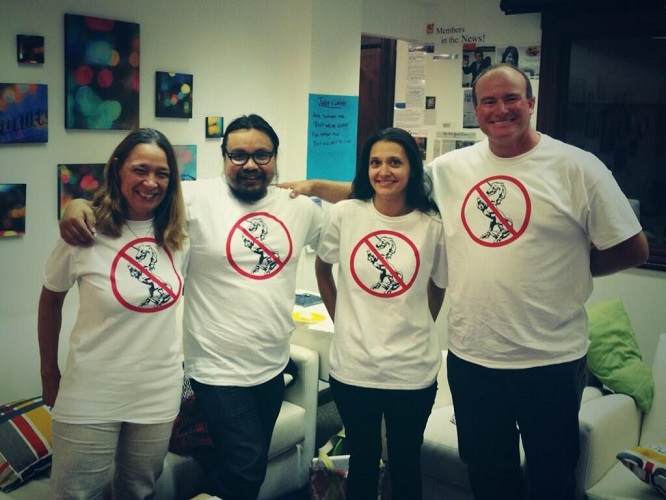A week ago, I wrote about how, despite heroic efforts on the part of many teachers and administrators and some success stories, the problems I see in education today are the same as when I began teaching in Banning and Riverside, CA almost 35 years ago.
If nothing changes, nothing changes
That is, if we don’t change our ways of teaching or managing schools, then I’ll be writing on here in 2049, assuming I’m not dead and the Internet hasn’t been replaced by something like brain to brain transmission, saying the same things.
Speaking of the Internet, how is it possible with all of the amazing advances in technology our schools are in the SAME SPOT?
I’m going to give you a few depressing facts but then I’ll give a few ideas that may make changes.
- * Schools spend $13.2 BILLION a year on educational technology
- * From 2011 to 2015 – the last time the Trends in International Math and Science Study was given, the U.S. improved NOT AT ALL for either fourth graders or eighth-graders. So the $53 billion spent on ed tech during that period netted us zero gains in test scores
- * For the past 100 years, research on socioeconomic and ethnic differences in test scores have shown low income and ethnic minority children to do far worse than middle and upper-class white children.
- * Half of educational software purchased is never used.
That’s crazy, right? It’s probably true of other interventions but since we’re talking about gamification today I’m talking about software specifically. For our company it’s 15% but that’s still nuts. Someone gives us a check, we take their money, we give them the software and then they never use it! Some of those schools renew the license and don’t use it for a second year!
The typical district used 30% of their licenses purchased – ever!
Only 2.5% of software was used “intensively”, that is, for 10 hours or more.
So there is part of your answer on why all of these new innovations are not having an impact on students learning.
I used to coach judo and I’d tell the athletes all the time,
Don’t complain about the results you didn’t get from the work you didn’t do.
People would get mad at me for saying that. You don’t understand! I didn’t come to practice because I had to take the SAT, my grandma was in the hospital, it was my senior prom.
All of those may be very legitimate reasons but it doesn’t change the fact that your competition is now three practices ahead of you.
Let’s go back to education – if teachers don’t use software (or any new innovation), because they had an IEP meeting, were grading papers, writing lesson plans – it still goes back to
“If nothing changes, nothing changes.”
When I talk to those teachers who don’t use our software, or make other changes, they often say the same thing. They MEANT to do it. They really did, but they had those meetings, that child who was homeless for whom they were trying to get services, papers to grade … I’m going to say to you what I really want to say to them …
How is that working out for you?
If we’re honest, we both know that your students are just as far behind as they ever were.
I want to start with something that I have seen work and I will give you the up front that it will cost money, although not a huge amount, and that over 90% of that money would go to teachers. If you are looking for a magic unicorn that is going to gallop into your school, touch everything with its horn and fix all your problems at no cost and no money, you have come to the wrong place.

Here is my solution:
Pick an intervention – it could be our software, which would be awesome, or it could be something else. Commit to implementing it for three years.
Train all of your teachers on using it at the end of school in May or June. Pay them for their time. You could do this after school, on a Saturday or when school first gets out.
Train all your teachers again when school begins, preferably a few weeks after the beginning of the year, when the chaos has settled.
Create some web-based format for sharing resources on how to use your technology so that teachers can access it whenever and wherever convenient for them. It should probably be a combination of TeacherTube , and internal wiki and some type of file sharing, like Google Drive or Microsoft’s OneDrive.
Give your teachers CEUs for creating lesson plans and activities to integrate the new technology or intervention in their classroom.
If it’s technology, and you really want to make a difference, hire a computer applications instructor/ IT specialist or whatever you want to call this person. He or she should teach 3 hours a day. That will give your teachers 15 hours a week more prep time or grading time while the students are in the lab or using the iPads or Chromebooks. It will also mean that someone is on site to see that software updates get installed, computers that don’t work get fixed and information on new software or hardware gets distributed to the teachers.
I am not promising this will work but I can say I have seen it work at some schools that are doing substantially better than others serving the same student population. What I can promise you is that doing the same thing, with no more time and no more money is not going to magically change things. If you are saying, “We don’t need more money. They just need to stop waste in schools”, I propose you spend more time at schools because I’ve been in education for 34 years and I have yet to see that vast amount of waste that’s going to fix everything with no extra cost or changes. Maybe it’s hidden behind the unicorns.
Thank you for reading this. As my token of gratitude, have a free game that plays on iPads. (For you under appreciated Chrome and Windows users, I’ll add free games for you to the next few posts on this topic.)

